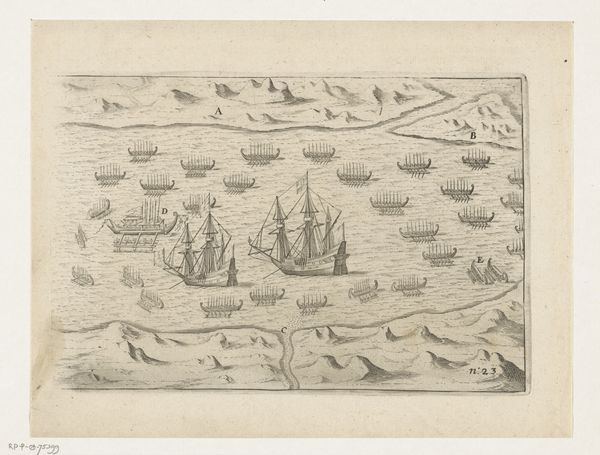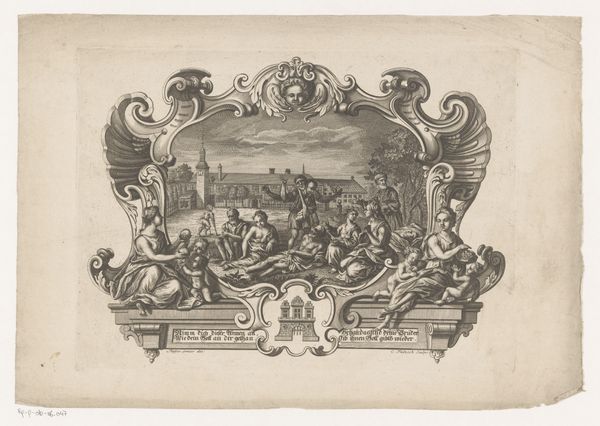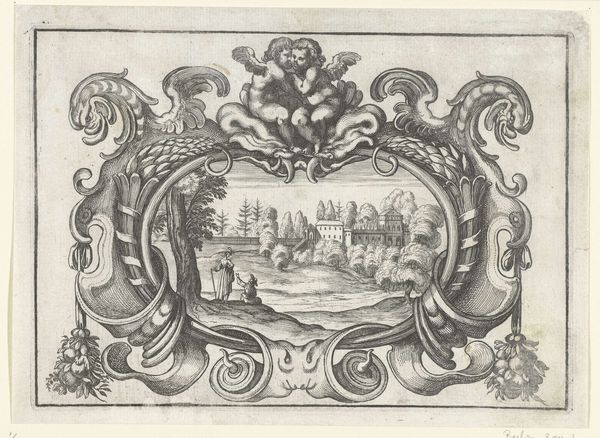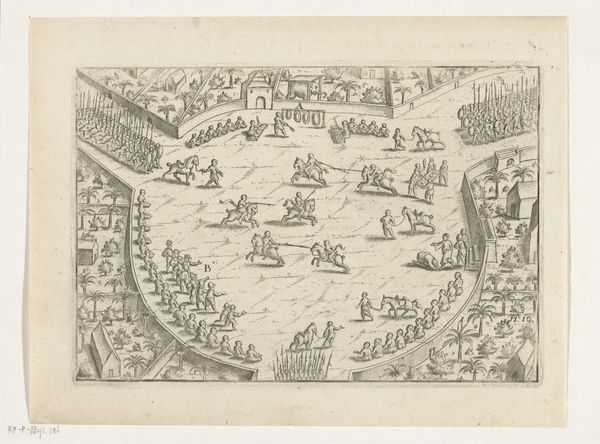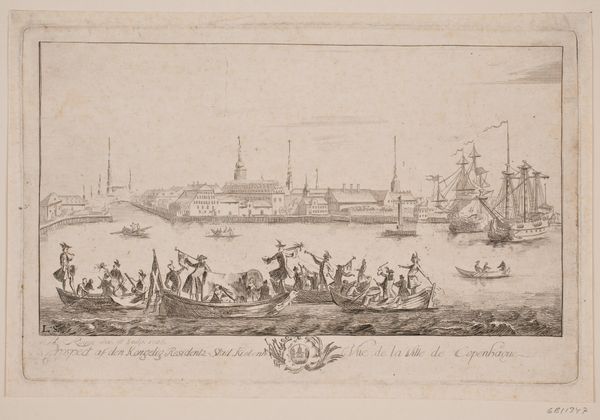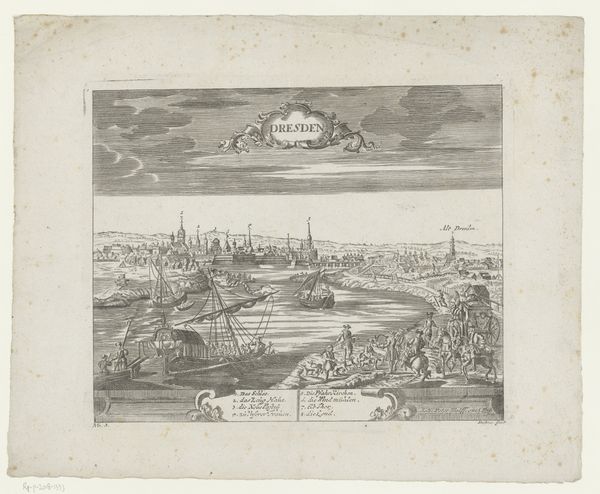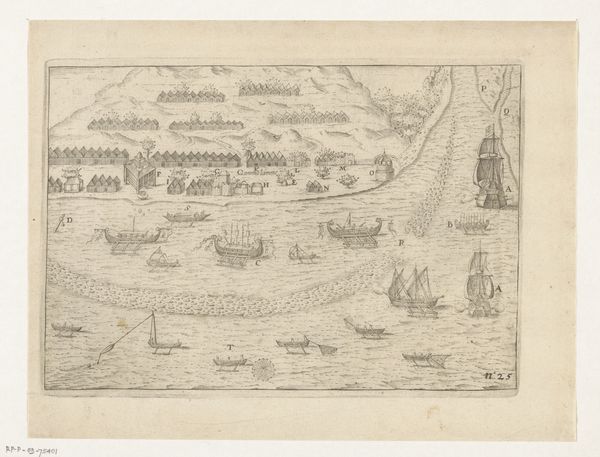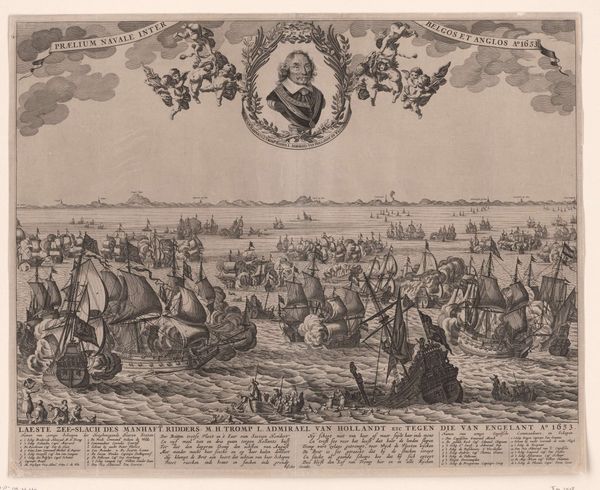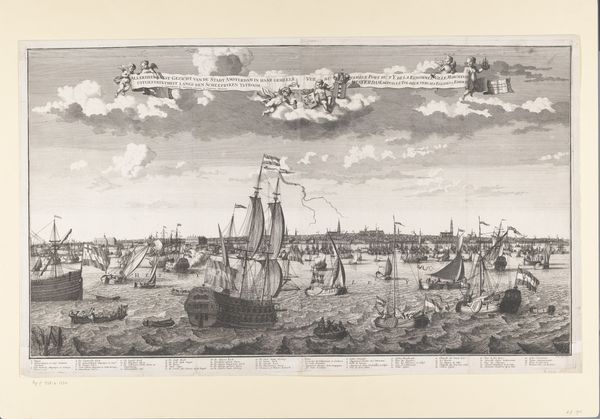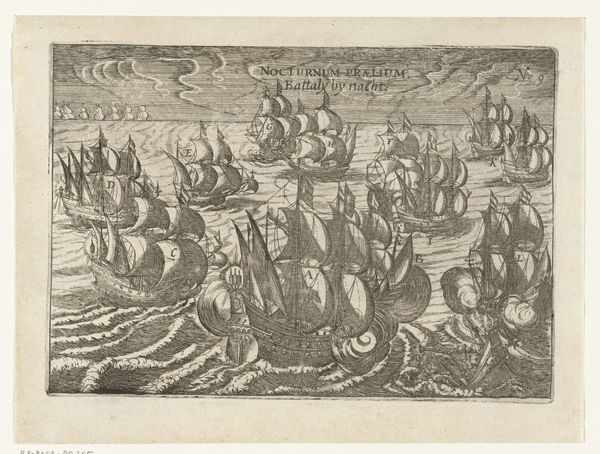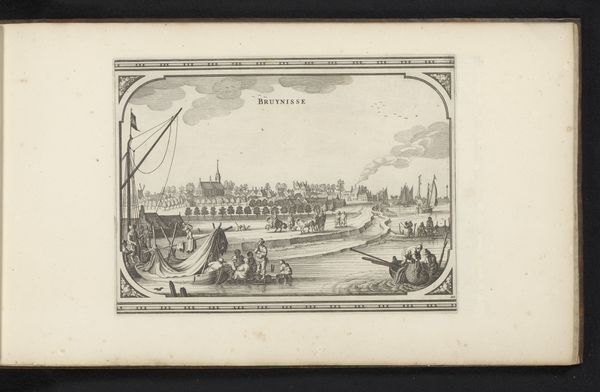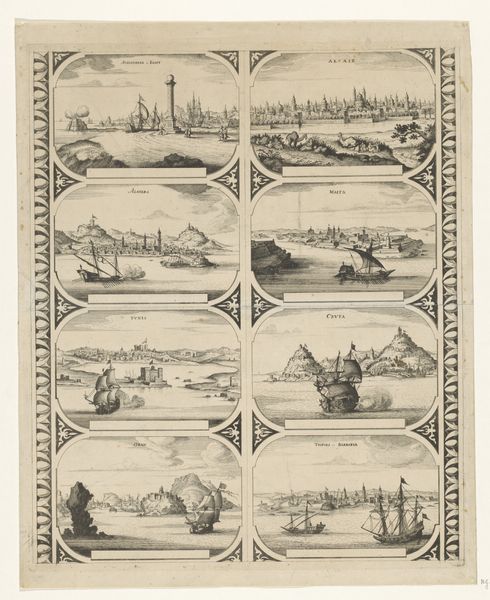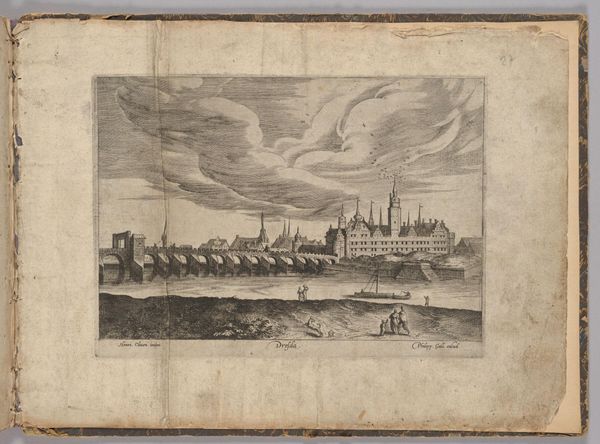
Reverse Copy of Le Débarquement des Troupes (The Landing of the Troops) 1628 - 1700
0:00
0:00
drawing, print, engraving
#
drawing
#
baroque
# print
#
pen sketch
#
landscape
#
history-painting
#
engraving
Dimensions: Sheet: 6 13/16 x 15 7/8 in. (17.3 x 40.4 cm) Plate: 5 3/8 x 14 3/4 in. (13.7 x 37.4 cm)
Copyright: Public Domain
Editor: Here we have "Reverse Copy of Le Débarquement des Troupes", or "The Landing of the Troops," a print dating somewhere between 1628 and 1700. It's an anonymous work, so we don't know the artist. What I notice immediately is how meticulously detailed the scene is despite the print’s small size. How do you read the composition of this piece? Curator: It is interesting to observe how history paintings, especially depictions of military events like this “Landing of the Troops”, served as tools for constructing national narratives and shaping public opinion. In this work, the fine detail almost normalizes military conflict, portraying it as another spectacle. Doesn’t the ornate frame around the scene contribute to that effect? Editor: That’s a compelling point, that the ornate frame almost glamorizes the "landing" as just another form of entertainment for consumption, masking what that means in real world implications for conflict, violence and death. To that point, are there other historical elements in the piece you see connecting to societal influences? Curator: The sheer scale of the depicted military operation suggests the might and reach of the European powers during this period, which reflects a period marked by colonial expansion and power struggles between nations. The print, even as a reversed copy, circulates a certain worldview, wouldn't you agree? Editor: I would, but isn’t it also possible the print aimed for accuracy in documenting military procedures for, say, strategic studies? Not just propaganda? Curator: That’s plausible. Perhaps it catered to an audience interested in military affairs, subtly shaping their understanding and acceptance of such large operations, though the emphasis seems more on the "grandness" of military actions. What is your final interpretation? Editor: Seeing it now, I initially viewed the engraving simply as a historical record, but you’ve shown me how art can both reflect and mold society's perspectives on power and military spectacle. Curator: Precisely. Analyzing art within its historical context truly helps unpack the intricate relationship between art and societal forces.
Comments
No comments
Be the first to comment and join the conversation on the ultimate creative platform.
